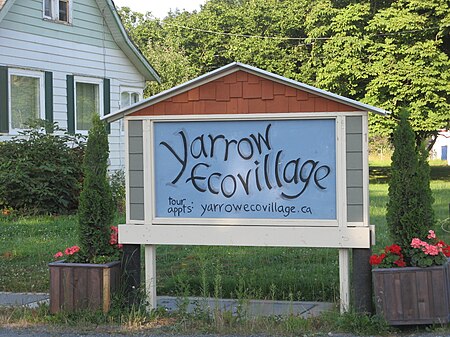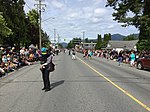Yarrow Ecovillage

The Yarrow Ecovillage is an intentional community in Yarrow, British Columbia, Canada. Yarrow is a settlement of 3,000 population within the municipal boundaries of Chilliwack, British Columbia. The Ecovillage is a member-designed community that aims to achieve a more socially, ecologically and economically sustainable way of life. The Ecovillage's master plan for the 10-hectare (25-acre) former dairy farm, foresaw three main legal entities: An 8-hectare (20-acre) organic farm, a 31-unit multigenerational cohousing community (later increased to 33 units), and a mixed-use development with just under 2800 m2 (30,000 sf) of commercial space, a 17-unit senior cohousing community and a learning centre.Chilliwack City Council approved the plans, granting "Ecovillage zoning" in 2006. In January 2015, the Ecovillage had 100 residents (one third of whom were children) in the multigenerational cohousing community ("Groundswell Cohousing"). The organic farm has been in operation since 2003. In January 2014, Groundswell Cohousing at the Yarrow Ecovillage was awarded the "Sustainability Leadership Award" by the Chilliwack Chamber of Commerce at the 19th Annual Business Excellence Awards.
Excerpt from the Wikipedia article Yarrow Ecovillage (License: CC BY-SA 3.0, Authors, Images).Yarrow Ecovillage
Yarrow Central Road, Chilliwack Yarrow
Geographical coordinates (GPS) Address Nearby Places Show on map
Geographical coordinates (GPS)
| Latitude | Longitude |
|---|---|
| N 49.081 ° | E -122.053 ° |
Address
Yarrow Central Road
Yarrow Central Road
V2R 5E0 Chilliwack, Yarrow
British Columbia, Canada
Open on Google Maps




